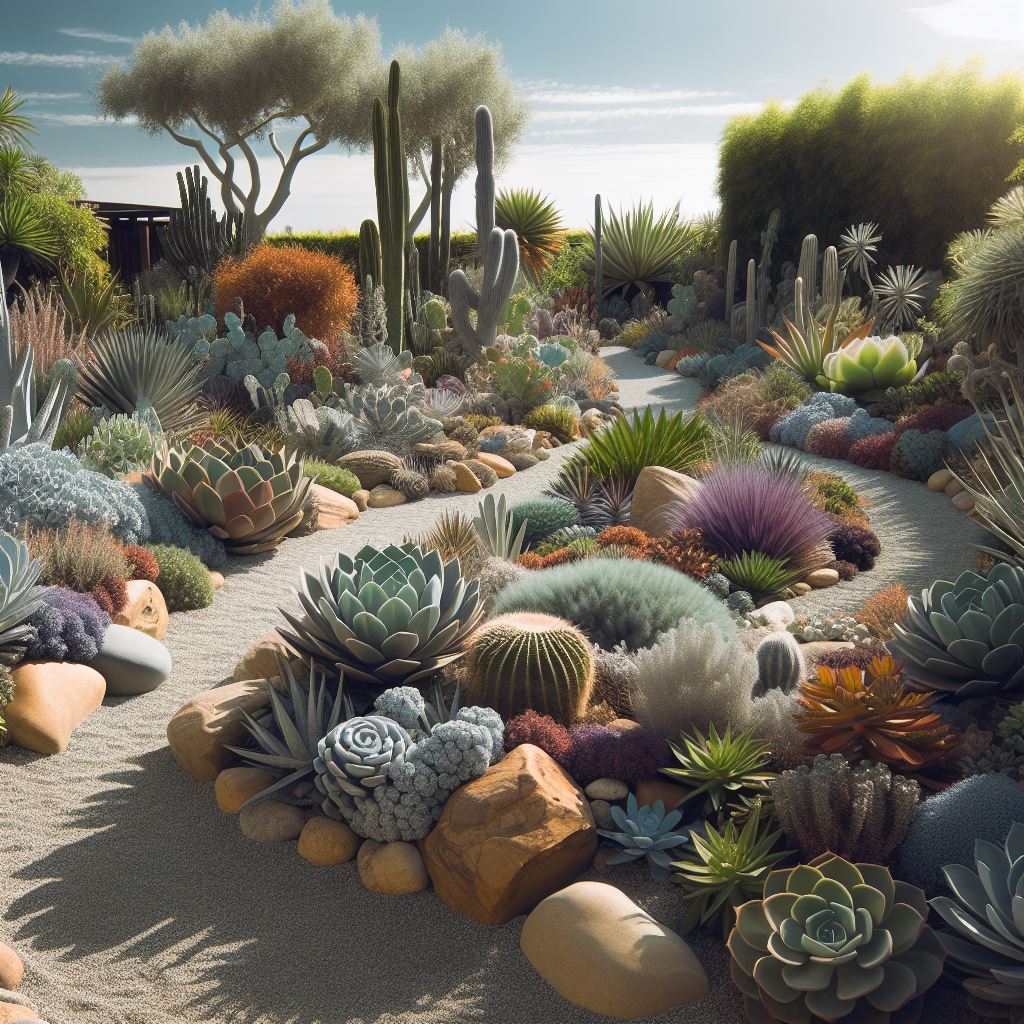Introduction: Rethink Your Lawn, Celebrate Regional Natural Beauty
In drought-prone regions, traditional green lawns are relics of the past. Turfgrass guzzles precious water, demands constant upkeep, and disrupts local ecosystems. But there’s a better way: replacing thirsty grass with native plants creates a vibrant, water-wise landscape that thrives in dry climates. Many communities, including those offering rebate programs like Santa Monica’s, incentivize this eco-friendly shift. Let’s explore how native plants can transform your yard into a resilient oasis while saving water—and money.
Why Native Plants? The Ultimate Water-Saving Superstars
Native plants have evolved over millennia to survive regional climates, soils, and rainfall patterns. By choosing species that belong in your area, you’ll unlock unparalleled benefits:
- Dramatic Water Savings: Native plants need up to 90% less water than turfgrass once established, relying on natural rainfall and minimal irrigation.
- Zero Chemicals: Adapted to local pests and soils, they rarely need fertilizers or pesticides.
- Wildlife Habitat: They provide food and shelter for pollinators, birds, and endangered species.
- Year-Round Beauty: From spring wildflowers to evergreen shrubs, native gardens offer texture, color, and seasonal interest.
Rebate Programs: Get Paid to Plant Local
Some communities, like Santa Monica, offer turf replacement rebates to encourage water-wise landscaping. Key details for eligible programs:
- Rebate Offers: Earn incentives (e.g., $3 per square foot in Santa Monica) for replacing grass with drought-tolerant native plants.
- Native Plant Focus: Designs often prioritize regional species to qualify. Non-native succulents or gravel-only yards may not meet criteria.
- Steps to Cash In:
- Design Approval: Submit a plan highlighting native species like sage, buckwheat, and manzanita.
- Remove Grass: Use eco-friendly methods like sheet mulching.
- Plant & Irrigate Wisely: Install drip systems or rain barrels.
- Claim Your Rebate: Submit post-installation documentation.
Top Native Plants for Drought-Tolerant Gardens
Incorporate these regional stars to create a thriving, low-water landscape:
- Sage (Salvia spp.): Drought-resistant with fragrant foliage and pollinator-friendly blooms.
- California Buckwheat (Eriogonum fasciculatum): A hardy shrub with summer flowers that feed bees and butterflies.
- Manzanita (Arctostaphylos): Evergreen with striking red bark and winter blooms.
- Deergrass (Muhlenbergia rigens): Ornamental grass that adds movement and texture.
- Coastal Prickly Pear (Opuntia littoralis): A rugged cactus with vibrant flowers.
Designing Your Native Plant Paradise
- Layer by Water Needs: Group low-water plants (e.g., sage) separately from those needing occasional summer irrigation.
- Mulch Deeply: Use 3–4 inches of organic mulch to retain moisture and suppress weeds.
- Capture Rainwater: Pair plants with bioswales or rain gardens to direct runoff to roots.
Water Savings in Action: Success Stories
- Case Study: A homeowner replaced 800 sq. ft. of lawn with native sage, yarrow, and grasses. Their water bill dropped by 65%, saving over 30,000 gallons annually.
- Community Impact: Programs in water-conscious cities have saved millions of gallons annually, easing strain on regional supplies.
Busting Myths About Native Landscapes
- “They look desert-like”: Native gardens can be lush! Imagine spring blooms of lupines and poppies, layered with evergreen shrubs.
- “They’re hard to grow”: Start with easy-care species like yarrow (Achillea millefolium) or bush sunflower (Encelia californica). Nurseries specializing in native plants offer expert guidance.
How to Start Your Conversion
- Visit a Native Nursery: Explore local sales or workshops for inspiration.
- Phase Your Project: Convert sections gradually to manage costs.
- Share the Vision: Neighbors often follow suit once they see your thriving, low-maintenance garden!
Conclusion: Grow Local, Save Global
We took the leap in Santa Monica to leverage their Cash for Grass rebate program and applied in February 2025 and are awaiting for their review and approval. The application process was easy and we’re just waiting for their feedback on next steps.
We were fortunate to partner with the amazing landscape architect Gus Khoury, https://www.instagram.com/cactgus/ who was able to help us not only replace our lawns with drought tolerant native plants, but took the further step of leveraging only salvaged plants from other local construction renovations and kept existing plants from going into dumpsters and landfills.
By embracing native plants, you’re saving water, reviving ecosystems, and honoring your region’s natural heritage. Where available, rebate programs can offset costs, making it easier than ever to ditch the lawn.
Ready to Transform Your Yard?
👉 Explore Rebates: Check local programs for incentives (e.g., Santa Monica’s Water Conservation Page).
👉 Tag Your Progress: Share photos with #NativeWaterWiseGardens to inspire others!
Let your garden become a testament to resilience—one native plant at a time. 🌿💧
Pro Tip: Pair native plants with smart irrigation controllers (often rebate-eligible!) to automate water savings. The Earth—and your wallet—will thank you!




